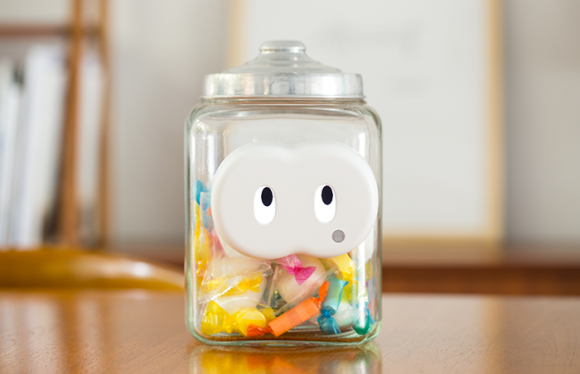
Some of you may remember Neurowear as the company who made Necomimi, the robotic cat ears that you can control with brainwaves, and their follow up projects Shippo (mind controlled robot tail) and Mico (mind controlled music player).
This time, however, Neurowear won’t be reading our brain waves but will instead try to give some to your fridge or sofa. The latest project called Mononome works with your smartphone to deepen your relationship with a household item of your choice by adding a touch of humanity to it.
Mononome is currently on display for Tokyo Designers Week from 25 October to 3 November. We caught up with Neurowear’s Kana Nakano during the exhibition to learn more about it.
Mononome is a device shaped like a pair eyes and has an adhesive back which allows it to be attached to a cupboard, vacuum cleaner or whatever you’d like. It comes equipped with vibration sensors that records when and how often the object is used in coordination with your smartphone. If you are using it too roughly, frequently, or infrequently it will react by showing emotion or a message in its LED eyes. Here’s Ms. Nakano to tell us more.
Ms. Nakano please tell us more about the Mononome in the exhibit.
“Here is a Mononome attached to a candy jar. If you take some candy two times in a row then it will say “NO.” And the Mononome on this chair will have a lonely expression if no one sits in it in a while. Over time these items will come to have their own existence like family or friends.”
Why do we want these things to become like friends?
“Take a diet app for example. More than coldly telling you to “input your weight” it should make people want to get on the scale who usually dread it. In interacting with humans it is important for a device to have intelligence, but we think having warmth and intimacy are also important. For this you need to have a certain cuteness.”
And so you came up with this design?
“We thought that part of the fun of the eye shape is wondering what thing you’re going to attach it to.”
Tell me the reason you made Mononome.
“We thought it would be good to have things understand the feelings of people. Ideally it would be like the banquet scene from Beauty and the Beast with pots dancing around and items offering their hospitality.”
What would you attach a Mononome to?
“Like in the video we put out, I’d want to try it on a vacuum cleaner or refrigerator. Other than that I think it would be useful for women to use on their sanitary pad cases. The Mononomes at this exhibition are prototypes. We hope the final version will be much smaller so it can be attached to a wider range of things like that.”
Thank you for speaking with us today.
As Ms. Nakano said, these Mononomes are only prototypes, so a full list of what they will do on release has not been completed yet. However, Mononome perhaps should be seen more as a concept of the importance of humanity in technology design rather than simply a product itself. It’s a factor that other designers in the field could benefit from adding to any product.
Source: Mononome, Tokyo Design Week (Japanese)
Top Image: Mononome
Interview and other photos by Toru Imamura
▼ A video demonstration we took at the exhibit
▼ A slightly slicker presentation from Neurowear
▼ And for old times’ sake, here’s Necomimi again
[ Read in Japanese ]

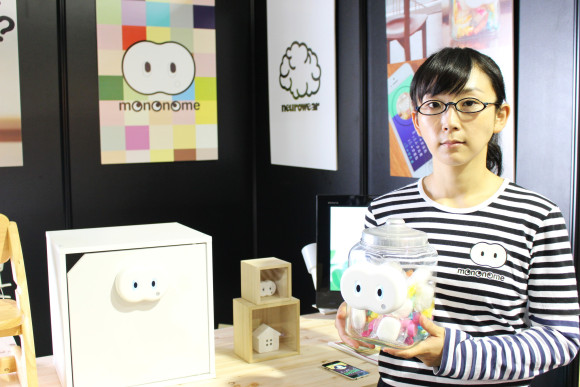
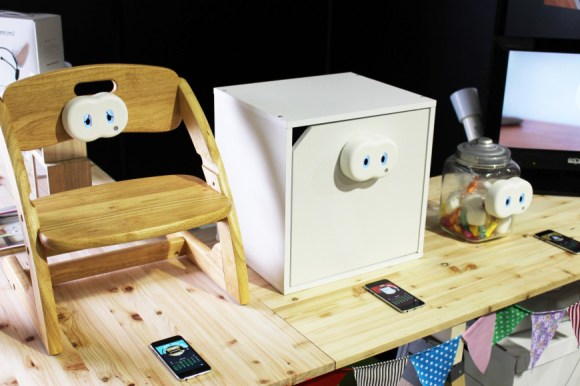
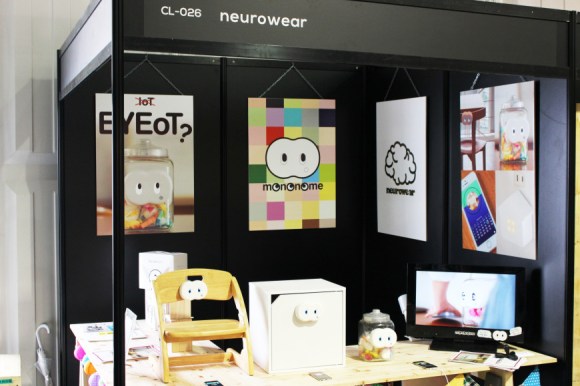
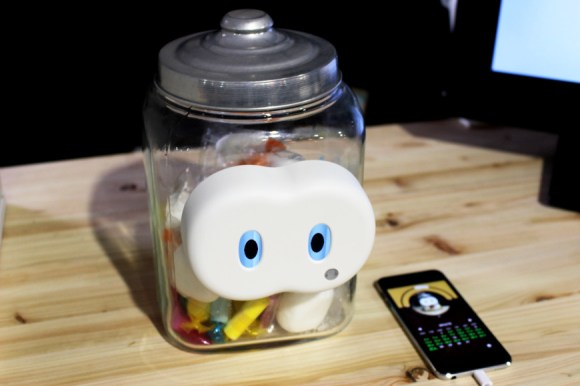
 Rakuten randomly offers 58 New Year’s osechi feasts in Japan, but did we get a star or a dud?
Rakuten randomly offers 58 New Year’s osechi feasts in Japan, but did we get a star or a dud? Japanese beef bowl chain Sukiya’s 2026 Smile Box lucky bag basically pays for itself
Japanese beef bowl chain Sukiya’s 2026 Smile Box lucky bag basically pays for itself Majority of Japanese mayors say foreign residents are essential but most see good and bad effects
Majority of Japanese mayors say foreign residents are essential but most see good and bad effects Four Shinto shrines to pray for love at in Japan to start the New Year
Four Shinto shrines to pray for love at in Japan to start the New Year Tokyo fish market breaks New Year auction record as single fish sells for over 5 million yen【Vid】
Tokyo fish market breaks New Year auction record as single fish sells for over 5 million yen【Vid】 Rakuten randomly offers 58 New Year’s osechi feasts in Japan, but did we get a star or a dud?
Rakuten randomly offers 58 New Year’s osechi feasts in Japan, but did we get a star or a dud? Japanese beef bowl chain Sukiya’s 2026 Smile Box lucky bag basically pays for itself
Japanese beef bowl chain Sukiya’s 2026 Smile Box lucky bag basically pays for itself Majority of Japanese mayors say foreign residents are essential but most see good and bad effects
Majority of Japanese mayors say foreign residents are essential but most see good and bad effects Four Shinto shrines to pray for love at in Japan to start the New Year
Four Shinto shrines to pray for love at in Japan to start the New Year Tokyo fish market breaks New Year auction record as single fish sells for over 5 million yen【Vid】
Tokyo fish market breaks New Year auction record as single fish sells for over 5 million yen【Vid】 Should you dip your cake in sake? One Japanese brewer says no, but actually yes【 Taste test】
Should you dip your cake in sake? One Japanese brewer says no, but actually yes【 Taste test】 Japan’s laziest, least motivated train station ticket gate charms the Internet【Photos】
Japan’s laziest, least motivated train station ticket gate charms the Internet【Photos】 New Japanese menstrual product seeks to help women spot unidentified iron deficiencies
New Japanese menstrual product seeks to help women spot unidentified iron deficiencies We delight in the gastronomic treasures we found in the Hokkaido Umaimonokan lucky bag
We delight in the gastronomic treasures we found in the Hokkaido Umaimonokan lucky bag Survey says osechi New Year’s food differs according to each region in Japan
Survey says osechi New Year’s food differs according to each region in Japan Starbucks Japan ready to get Year of the Horse started with adorable drinkware and plushies【Pics】
Starbucks Japan ready to get Year of the Horse started with adorable drinkware and plushies【Pics】 Hayao Miyazaki says Happy New Year to Studio Ghibli fans with new art for Year of the Horse
Hayao Miyazaki says Happy New Year to Studio Ghibli fans with new art for Year of the Horse We found possibly the quietest Japanese-style hotel in Tokyo’s bustling Shinjuku district
We found possibly the quietest Japanese-style hotel in Tokyo’s bustling Shinjuku district Cup Noodle tries an authentic Jiro-style ramen, but something’s not quite right
Cup Noodle tries an authentic Jiro-style ramen, but something’s not quite right The best Starbucks Japan Frappuccinos we want to drink again in 2026
The best Starbucks Japan Frappuccinos we want to drink again in 2026 We revisited Sweets Paradise after a decade to see if Japan’s dessert buffet still delivers
We revisited Sweets Paradise after a decade to see if Japan’s dessert buffet still delivers That time Seiji called JASRAC to ask why he didn’t get paid royalties for his song being on TV
That time Seiji called JASRAC to ask why he didn’t get paid royalties for his song being on TV Japan’s oldest largetooth sawfish in captivity back on display in Mie Prefecture
Japan’s oldest largetooth sawfish in captivity back on display in Mie Prefecture Pizza Hut Japan’s hot lucky bags are perfect for a New Year’s pizza party
Pizza Hut Japan’s hot lucky bags are perfect for a New Year’s pizza party 7-Eleven Japan starts new temporary luggage storage service in over 300 branches
7-Eleven Japan starts new temporary luggage storage service in over 300 branches Disillusionment at Tsukiji’s tourist-target prices led us to a great ramen restaurant in Tokyo
Disillusionment at Tsukiji’s tourist-target prices led us to a great ramen restaurant in Tokyo Starbucks teams up with 166-year-old Kyoto doll maker for Year of the Horse decorations【Photos】
Starbucks teams up with 166-year-old Kyoto doll maker for Year of the Horse decorations【Photos】 Tokyo considering law requiring more trash cans following litter increase in heavily touristed area
Tokyo considering law requiring more trash cans following litter increase in heavily touristed area Tokyo’s Tsukiji sushi neighborhood asks tour groups to stay away for the rest of the month
Tokyo’s Tsukiji sushi neighborhood asks tour groups to stay away for the rest of the month Tokyo event lets you travel back in time, for free, to celebrate 100 years since Showa era start
Tokyo event lets you travel back in time, for free, to celebrate 100 years since Showa era start Japan may add Japanese language proficiency, lifestyle classes to permanent foreign resident requirements
Japan may add Japanese language proficiency, lifestyle classes to permanent foreign resident requirements Sanrio theme park in Japan announces plans to expand into a Sanrio resort
Sanrio theme park in Japan announces plans to expand into a Sanrio resort Stamina-destroying “Paralysis Noodles” are Tokyo’s newest over-the-top ramen innovation
Stamina-destroying “Paralysis Noodles” are Tokyo’s newest over-the-top ramen innovation Survey asks foreign tourists what bothered them in Japan, more than half gave same answer
Survey asks foreign tourists what bothered them in Japan, more than half gave same answer Japan’s human washing machines will go on sale to general public, demos to be held in Tokyo
Japan’s human washing machines will go on sale to general public, demos to be held in Tokyo Japan’s deadliest food claims more victims, but why do people keep eating it for New Year’s?
Japan’s deadliest food claims more victims, but why do people keep eating it for New Year’s? We deeply regret going into this tunnel on our walk in the mountains of Japan
We deeply regret going into this tunnel on our walk in the mountains of Japan Studio Ghibli releases Kodama forest spirits from Princess Mononoke to light up your home
Studio Ghibli releases Kodama forest spirits from Princess Mononoke to light up your home Major Japanese hotel chain says reservations via overseas booking sites may not be valid
Major Japanese hotel chain says reservations via overseas booking sites may not be valid Put sesame oil in your coffee? Japanese maker says it’s the best way to start your day【Taste test】
Put sesame oil in your coffee? Japanese maker says it’s the best way to start your day【Taste test】 No more using real katana for tourism activities, Japan’s National Police Agency says
No more using real katana for tourism activities, Japan’s National Police Agency says Starbucks Japan reveals new sakura drinkware collection, inspired by evening cherry blossoms
Starbucks Japan reveals new sakura drinkware collection, inspired by evening cherry blossoms Updated cherry blossom forecast shows extra-long sakura season for Japan this year
Updated cherry blossom forecast shows extra-long sakura season for Japan this year Should you dip your cake in sake? One Japanese brewer says no, but actually yes【 Taste test】
Should you dip your cake in sake? One Japanese brewer says no, but actually yes【 Taste test】 Japan’s laziest, least motivated train station ticket gate charms the Internet【Photos】
Japan’s laziest, least motivated train station ticket gate charms the Internet【Photos】 New Japanese menstrual product seeks to help women spot unidentified iron deficiencies
New Japanese menstrual product seeks to help women spot unidentified iron deficiencies We delight in the gastronomic treasures we found in the Hokkaido Umaimonokan lucky bag
We delight in the gastronomic treasures we found in the Hokkaido Umaimonokan lucky bag Survey says osechi New Year’s food differs according to each region in Japan
Survey says osechi New Year’s food differs according to each region in Japan Japanese osechi New Year’s meal lucky bag gives us way more than we bargained for
Japanese osechi New Year’s meal lucky bag gives us way more than we bargained for Awesome Japanese sandals give you the footprints of a cat or T-rex
Awesome Japanese sandals give you the footprints of a cat or T-rex Did Mr. Sato just discover Japan’s longest bread?
Did Mr. Sato just discover Japan’s longest bread? Anime holy ground – A visit to the real-world location of Look Back【Photos】
Anime holy ground – A visit to the real-world location of Look Back【Photos】 Take a tour of Okinawa’s longest running movie theater: this creepy adult cinema
Take a tour of Okinawa’s longest running movie theater: this creepy adult cinema A simple DIY shiatsu hand massage to relieve all that pent-up stress from work【Video】
A simple DIY shiatsu hand massage to relieve all that pent-up stress from work【Video】 Pikachu pyjamas make this secret Pokémon fukubukuro lucky bag worth searching for
Pikachu pyjamas make this secret Pokémon fukubukuro lucky bag worth searching for We visited a “terrible” Japanese hot spring hotel near Narita Airport
We visited a “terrible” Japanese hot spring hotel near Narita Airport
Leave a Reply